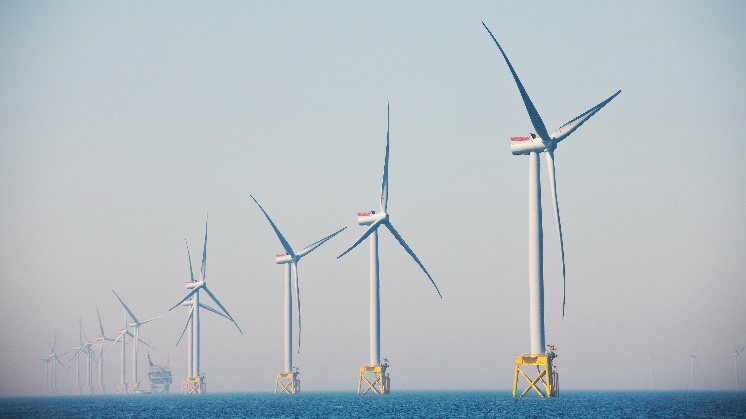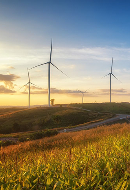Where to install offshore wind farms
How is the location of offshore wind farms chosen?
Offshore wind farms’ location is carefully chosen taking into account a number of factors to maximise energy generation and minimise environmental and social impacts. Find out what the criteria are for selecting the best locations for offshore wind farms.

Offshore wind energy is a form of renewable and clean energy that is generated by capturing, through offshore wind farms, the power of wind on the high seas − where its speed is more constant and higher as there are no physical obstacles. Furthermore, it should be taken into account that space is greater at sea and that ships offer the possibility of transporting larger blades and towers. This means that these offshore wind farms, equipped with the most advanced technical innovations, can optimise this inexhaustible and clean source of energy in an efficient manner.
However, how do you decide where to install offshore wind farms, and how do you choose whether they should be offshore or floating wind farms? This process involves assessing various key factors whose analysis seeks to maximise the potential for wind energy generation in areas with strong and consistent winds, while considering logistical and environmental feasibility. Learn about the key criteria to ensure the optimal location for renewable energy generation in the marine environment.
Factors to take into account when choosing the location of offshore wind farms
One of the first criteria to consider when deciding where to install offshore wind farms is the analysis of the wind resource. A good location must have a constant and strong wind, so it is necessary to collect historical data on wind speed and direction at the offshore location of interest. This data can come from onshore weather stations, offshore weather buoys or measurements taken at the specific location. These data are analysed to determine average wind speed, wind variability over the year or seasonal trends, and models are developed to take into account orography, sea temperature and other local factors that may influence the wind.
Another important issue is the depth required for wind farms as this influences the type of foundation required for wind turbines. In shallow waters, fixed foundations can be used, such as monopiles or gravity or jacket foundations, which are fixed on the seabed. In deeper waters, floating solutions are required, which are currently under development and therefore in early projects must take into account the increased costs and technical challenges compared to fixed foundations, which have nearly 20 years of development and accumulated experience.
Another variable to take into account is the distance to the coast, which largely determines the logistics of construction and maintenance, as well as the fact that a shorter distance facilitates interconnection to the electricity grid.
Finally, we must not forget the shipping lanes.

Floating or fixed offshore wind?
A correlative to the decision of where to install offshore wind farms is what type of technology to use. The choice between floating and fixed offshore wind depends on a number of elements that must be carefully evaluated in the context of a specific project. Water depth has already been mentioned as a determining factor since floating wind farms are needed in deep water, where fixed foundations are not feasible. However, the power generation potential must also be taken into account, as floating wind farms can take advantage of areas with stronger and more constant offshore winds, which rises up the generation potential compared to shallow water foundations.
In terms of environmental impact, floating wind farms potentially have a minor environmental impact on the surroundings. Other specific conditions, such as geology, ocean currents, climate and navigation, must also be assessed, as they can be critical in ensuring the safety and viability of the project.
It should be noted that the combination of both types of technologies can also be a viable option in certain cases, taking advantage of their respective strengths to maximise renewable energy generation in the marine environment.
Where can offshore wind farms be built?
- 60 m
- 70 m
- 80 m
- 90 m
Fixed-bottom wind farms
The geotechnical and metocean conditions determine whether fixed-bottom or floating is economically viable
Floating wind farms
- The capacity factor is essential when deciding where to build a wind farm. It’s calculated by dividing the energy produced by what it could produce if it operated all the time at maximum power.
- Floating wind farms have a higher CAPEX than fixed-bottom ones, which is why they are installed in areas with capacity factors not much lower than 50%.

Construction of an offshore wind plant
Everything you'd like to know about offshore wind farm construction.

Visual impact of offshore wind energy
How to integrate it into the coastal landscape.

Terms of offshore wind energy
We invite you to learn the basics of offshore wind energy.

Wind measurement
Wind measurement is essential for selecting the most suitable sites.





